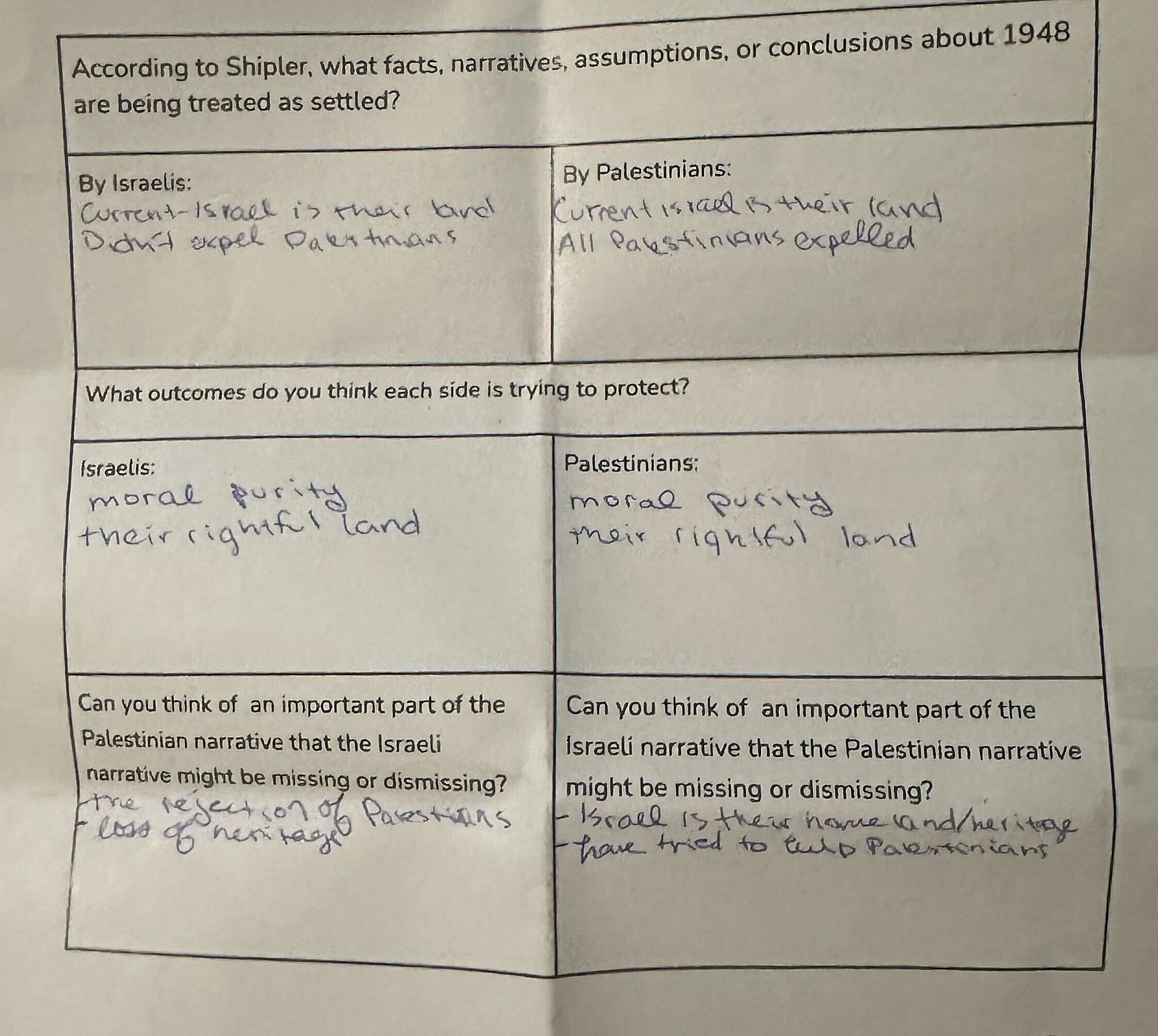Austin Scholar #108: Teach your kid to argue both sides
& how I learned to debate about current events
Hey, y'all!
This week from Austin Scholar...
Austin’s Anecdote: How I learned to debate about current events
Teach your kid to argue both sides
Scholar’s Sources: What I’ve been up to…
I learned pretty much the most insane thing ever this week.
My dad was at a SXSW event and told me that some of the people there get together and talk about my newsletter every Sunday – about what advice I’d given and how to apply it. What?!
A lot of the time, I feel like I’m writing into the void, so hearing that actual people are reading my content is incredible.
On that note, if any of y’all ever have any questions about the newsletter, my experiences, or anything else, please feel free to reach out!! I’d love to meet you :)
Austin’s Anecdote: How I learned to debate about current events
On the topic of conversations, I recently had a pretty unique experience.
Alpha students were invited down to the new University of Austin, to complete the Mill Institute’s Viewpoint Diversity Challenge.
Basically, the goal of the challenge was to facilitate open, balanced, respectful discussion about the Israeli-Hamas conflict.
Now, I’m someone who prefers to stay away from political discussions. I dislike how chaotic and hurtful they can get, so I was pretty nervous about doing this.
The night before, we were assigned a podcast to listen to detailing both sides of the conflict and wrote down notes.
Here’s what mine looked like:
There were a few rules for the discussion, but the most interesting was that we must assume that the speaker has good intentions – not hurtful ones.
So often, people assume the worst interpretation in an effort to take a speaker down. Instead, we should be giving them grace and realizing they have reasons for what they believe – and that they’re not trying to be hurtful.
At the event, this established a baseline of respect and kindness in the room.
And so when people had conflicting opinions about the situation, they knew to assume the best from the other person. Arguments assuming the worst were dismissed.
Because of this, we were actually able to have a fascinating discussion about the Israeli-Hamas conflict – without insults and petty fighting. I learned a lot from both sides and everyone was able to have a balanced discussion. There was no reason for me to have been worried.
And as my friend Peyton Price said, “In Gen Z discourse on this conflict today, there is absolutely no room to ask questions and seek understanding of differing viewpoints… Instead, there are unprecedented levels of hatred, cancel-culture, and polarization. If we can't teach and allow young people to have civil, open discussions about contentious topics, our society is not truly free and won't survive.”
The Mill Institute ended up writing an article about our experience there – so y’all should definitely check that out!
Teach your kid to argue both sides
Having a balanced mindset and being able to think critically about differing arguments is not something that’s easy to learn – especially for young kids.
So how can you teach them to do this? Argue both sides.
Forcing kids to argue both sides can show them that there really are two sides to every story – and that the world isn’t as black-and-white as they might think.
Obviously, most kids aren’t ready to discuss something as contentious as the Israel-Hamas conflict.




